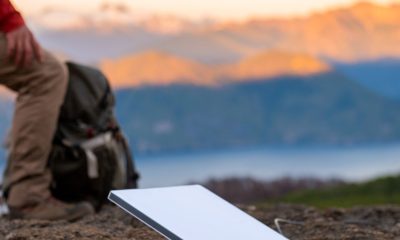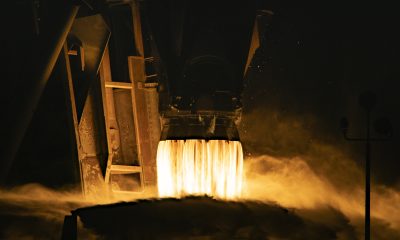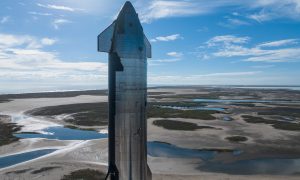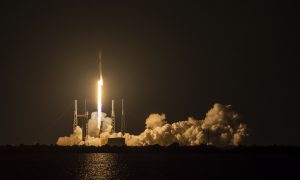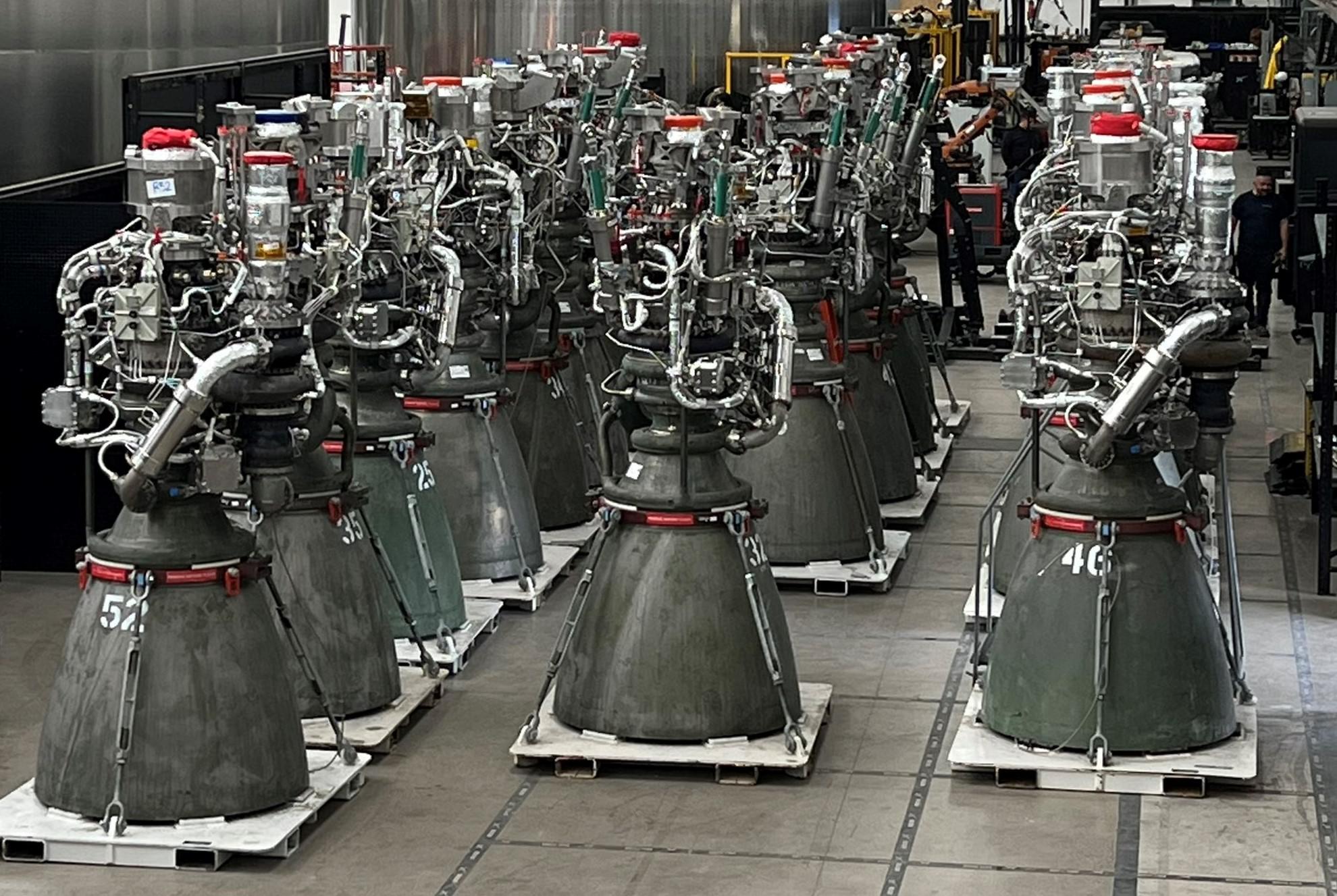

News
SpaceX rapidly shipping upgraded Raptor engines to Starbase
SpaceX appears to have opened the floodgates and begun shipping upgraded ‘Raptor V2’ engines to Starbase en masse in preparation for crucial Starship and Super Heavy testing.
The first functional Raptor engine delivery in around half a year and the first Raptor V2 delivery ever appeared to arrive at Starbase on March 30th. About a month and a half prior, SpaceX brought an early Raptor V2 prototype damaged during testing to serve as a backdrop for CEO Elon Musk’s February 10th Starship presentation, marking the first time the public was allowed to see or photograph the engine up close.
Less than three months later, Raptor V2 engines that passed proof testing without damaging or destroying themselves have begun to rapidly pile up inside one of Starbase’s three main production tents.
Though Raptor V2 has plenty in common with its Raptor V1 and V1.5 predecessors and, for the most part, looks very similar, Musk has repeatedly stated that the engine represents a major evolution from past Raptors. Most importantly, Raptor V2 was designed to significantly cut production cost and time. To achieve that, almost every major component was either fully redesigned, tweaked, or refined in some way to make Raptor simpler and more compact.
One example is the decision to slash the number of flanges (mechanical joints) in the engine’s plumbing by replacing them with welds. Making plumbing more monolithic could remove dozens of parts, seals, and potential leak points and significantly speed up manufacturing at the cost of making it harder – if not impossible – for SpaceX to inspect and replace certain pipes or pipe sections in a modular manner.
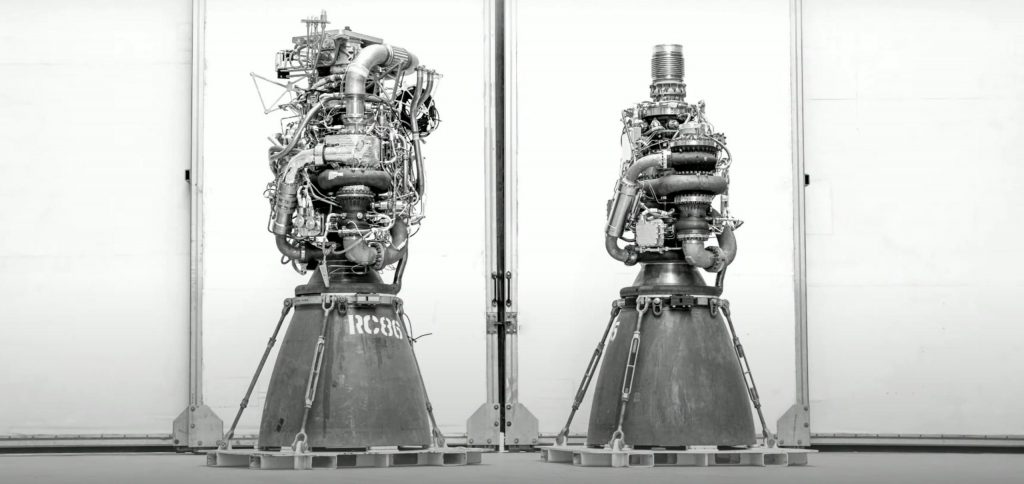
That process was repeated throughout each Raptor system, resulting in an engine that looks more streamlined than earlier variants. As a result of its more refined design and improvements to other critical components, Musk says that even though Raptor V2 now costs about half as much to build as V1.5, it’s also “much more…reliable.”
Despite significantly improving Raptor’s reliability, simplicity, and cost, SpaceX also managed to boost its maximum thrust by almost 25%. Raptor V2 engines now “routinely” operate at record-breaking main combustion chamber pressures of 300+ bar (~4400 psi) and are able to produce up to 230 tons (~510,000 lbf) of thrust at sea level. The older Raptor V1.5 engines that flew on Starships SN8-SN11 and SN15 and were installed on Super Heavy Booster 4 and Ship 20 were designed to produce around 185 tons (~410,000 lbf) at 250 bar (~3600 psi).
Following the premature retirement of Super Heavy Booster 4 (B4), which was meant to help send Starship S20 to space on the rocket’s first orbital launch attempt, that orbital launch debut is now guaranteed to use a different booster and ship powered by Raptor V2 engines. Ship 24 is a strong candidate for the mission’s Starship, while it remains to be seen if SpaceX will fully repair and attempt to proceed with Booster 7 or if Booster 8 – which is almost complete – will take point.
Either way, the pair will need at least 39 qualified Raptor V2 engines to begin integrated testing, pass several major static fire milestones, and prepare for flight. Since SpaceX appeared to kick off Raptor V2 deliveries to Starbase on March 30th, a photo shared by Musk on April 26th revealed that the company has managed to deliver at least 18 of the upgraded engines in the last four weeks. At least one more engine was also delivered on April 28th.
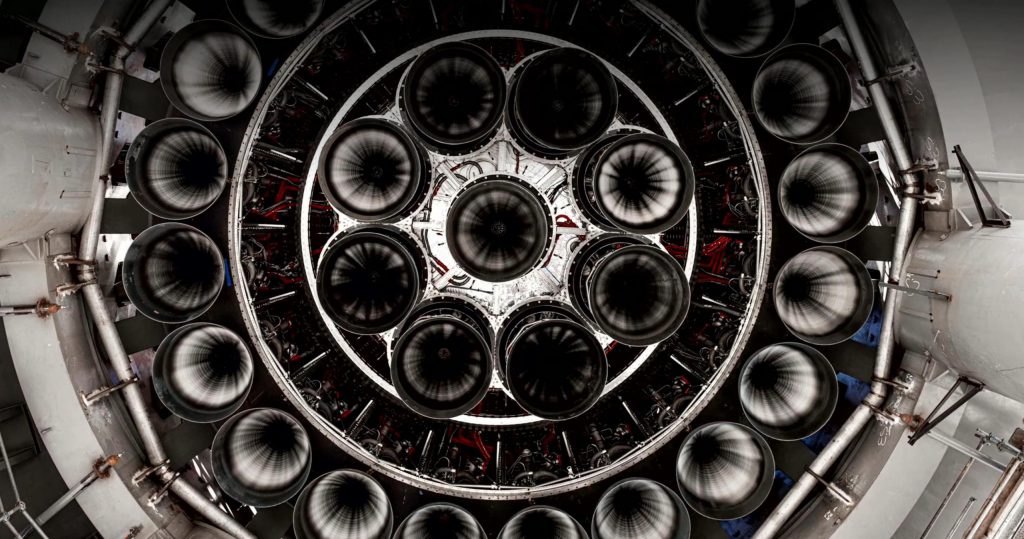
That means that SpaceX already has enough engines to begin static fire tests with a full cluster of 13 central Raptors on Super Heavy B7 or B8. By the time Ship 24 is fully assembled, Booster 7 is repaired, or Booster 8 is completed, there’s a good chance that SpaceX will have all the engines it needs to fully outfit a Starship and Super Heavy pair – not quite by the end of April, as Musk predicted, but not far off.
Investor's Corner
Tesla Board member and Airbnb co-founder loads up on TSLA ahead of robotaxi launch
Tesla CEO Elon Musk gave a nod of appreciation for the Tesla Board member’s purchase.

Tesla Board member and Airbnb Co-Founder Joe Gebbia has loaded up on TSLA stock (NASDAQ:TSLA). The Board member’s purchase comes just over a month before Tesla is expected to launch an initial robotaxi service in Austin, Texas.
Tesla CEO Elon Musk gave a nod of appreciation for the Tesla Board member in a post on social media.
The TSLA Purchase
As could be seen in a Form 4 submitted to the United States Securities and Exchange Commission (SEC) on Monday, Gebbia purchased about $1.02 million worth of TSLA stock. This was comprised of 4,000 TSLA shares at an average price of $256.308 per share.
Interestingly enough, Gebbia’s purchase represents the first time an insider has purchased TSLA stock in about five years. CEO Elon Musk, in response to a post on social media platform X about the Tesla Board member’s TSLA purchase, gave a nod of appreciation for Gebbia. “Joe rocks,” Musk wrote in his post on X.
Gebbia has served on Tesla’s Board as an independent director since 2022, and he is also a known friend of Elon Musk. He even joined the Trump Administration’s Department of Government Efficiency (DOGE) to help the government optimize its processes.
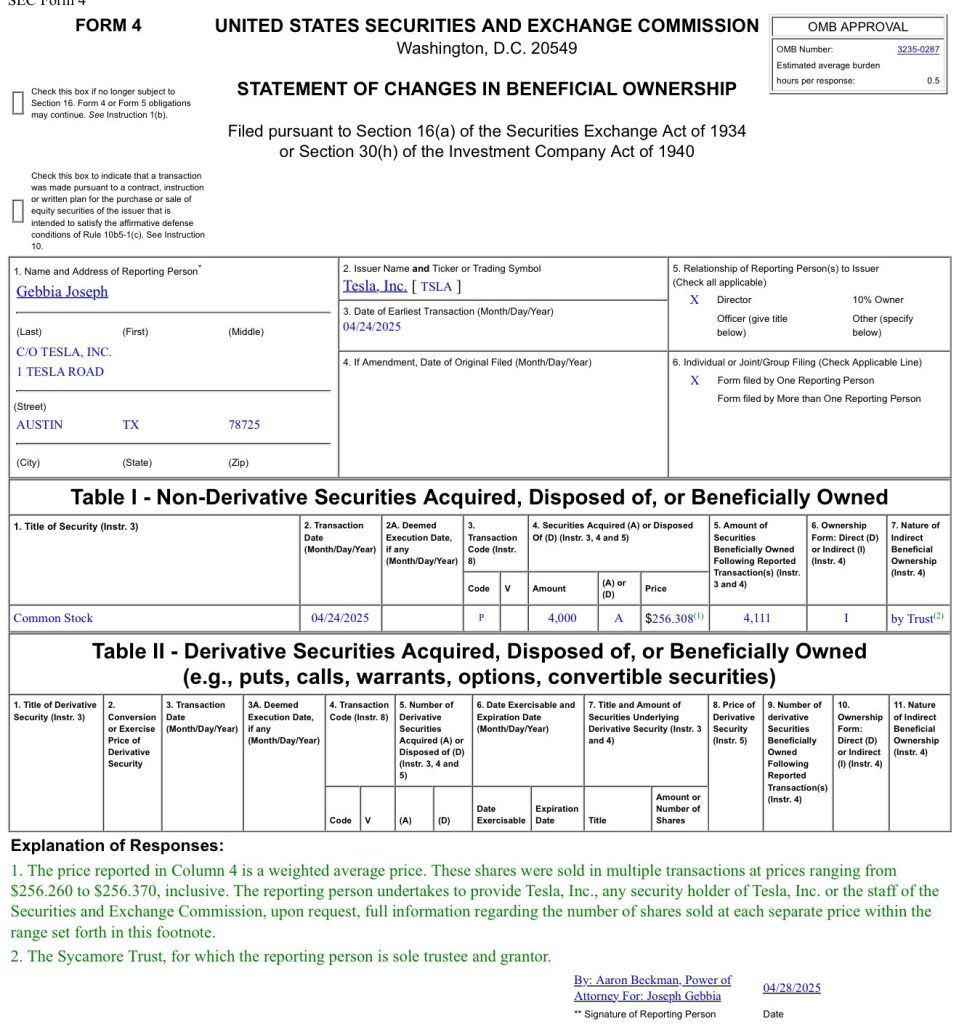
Just a Few Weeks Before Robotaxi
The timing of Gebbia’s TSLA stock purchase is quite interesting as the company is expected to launch a dedicated roboatxi service this June in Austin. A recent report from Insider, citing sources reportedly familiar with the matter, claimed that Tesla currently has 300 test operators driving robotaxis around Austin city streets. The publication’s sources also noted that Tesla has an internal deadline of June 1 for the robotaxi service’s rollout, but even a launch near the end of the month would be impressive.
During the Q1 2025 earnings call, Elon Musk explained that the robotaxi service that would be launched in June will feature autonomous rides in Model Y units. He also noted that the robotaxi service would see an expansion to other cities by the end of 2025. “The Teslas that will be fully autonomous in June in Austin are probably Model Ys. So, that is currently on track to be able to do paid rides fully autonomously in Austin in June and then to be in many other cities in the US by the end of this year,” Musk stated.
News
Stellantis unveils solid-state battery for EVs
Stellantis validated solid state battery cells for EVs: ultra-dense, fast-charging, and AI-optimized. Launching demo fleet by 2026.
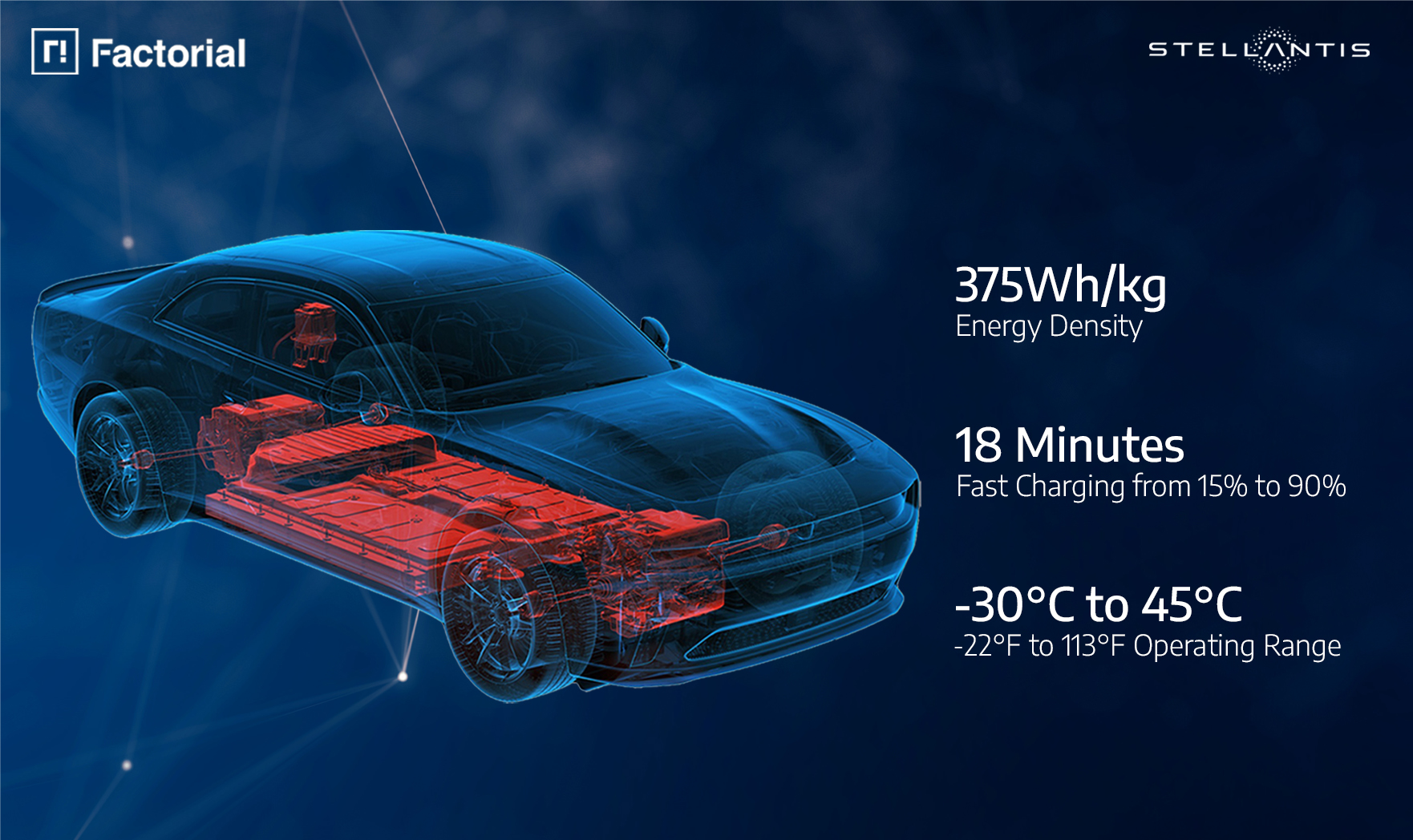
Stellantis N.V. and Factorial Energy have validated Factorial’s automotive-sized FEST® solid-state battery cells, a major milestone for next-generation electric vehicle (EV) batteries. The breakthrough positions Stellantis and Factorial to advance EV performance with lighter, more efficient batteries.
“Reaching this level of performance reflects the strengths of our collaboration with Factorial.
“This breakthrough puts us at the forefront of the solid-state revolution, but we are not stopping there. We continue working together to push the boundaries and deliver even more advanced solutions, bringing us closer to lighter, more efficient batteries that reduce costs for our customers,” said Ned Curic, Stellanti’s Chief Engineering and Technology Officer.
The 77Ah FEST® cells achieved an energy density of 375Wh/kg, supporting over 600 cycles toward automotive qualification. Unlike lithium-ion batteries, these solid-state cells charge from 15% to over 90% in 18 minutes at room temperature and deliver high power with discharge rates up to 4C. Factorial’s AI-driven electrolyte formulation enables performance in temperatures from -30°C to 45°C (-22°F to 113°F), overcoming previous solid-state limitations.
“Battery development is about compromise. While optimizing one feature is simple, balancing high energy density, cycle life, fast charging, and safety in an automotive-sized battery with OEM validation is a breakthrough,” said Siyu Huang, CEO of Factorial Energy. “This achievement with Stellantis is bringing next-generation battery technology from research to reality.”
The collaboration optimizes battery pack design for reduced weight and improved efficiency, enhancing vehicle range and affordability. Stellantis invested $75 million in Factorial in 2021 and plans to integrate these batteries into a demonstration fleet by 2026. This fleet will validate the technology’s real-world performance, a critical step toward commercialization.
The milestone aligns with Stellantis’ push for sustainable EV solutions, leveraging Factorial’s disruptive technology to meet the rising demand for high-performance batteries. As the companies refine pack architecture, the validated cells promise faster charging and greater efficiency, potentially reshaping the EV market. With the demonstration fleet on the horizon, Stellantis and Factorial are poised to lead the solid-state battery push, delivering cost-effective, high-range EVs to consumers.
News
Tesla China vehicle registrations rise 51% in April’s fourth week
In the week ending April 27, Tesla China saw 10,300 new vehicle registrations.

Tesla China’s new vehicle registrations saw a notable rise in the week of April 21-27, 2025. Over the week, the electric vehicle maker’s registrations saw an impressive 51% week-over-week rise, suggesting that domestic vehicle deliveries are on the rise once more.
Tesla China Results
In the week ending April 27, Tesla China saw 10,300 new vehicle registrations. This represents a notable rise from the company’s registration numbers in the past weeks of April. For context, Tesla China saw 3,600 registrations in the week ending April 6, 5,400 registrations in the week ending April 13, and 6,780 registrations in the week ending April 20, 2025.
Considering that April is the first month of the second quarter, expectations were high that Tesla China was allocating Giga Shanghai’s output for vehicle exports. With 10,300 registrations in the week ending April 27, however, it would appear that the company’s domestic deliveries are picking up once more.
Tesla China does not report its weekly sales figures, though a general idea of the company’s overall perforce in the domestic auto sector can be inferred through new vehicle registrations. Fortunately, these registrations are closely tracked by industry watchers, as well as some local automakers like Li Auto.
Tesla Model 3 and Model Y in Focus
Tesla China produces the Model Y and Model 3 in Giga Shanghai. Both vehicles are also exported from China to foreign territories. As per industry watchers, it would appear that both the Model 3 and Model Y saw an increase in registrations in the week ending April 27.
The Model 3, for one, appears to have seen 3,200 registrations in the week ending April 27, a 14% increase from the 2,800 that were registered in the week ending April 20. For context, Tesla China saw just 1,500 new Model 3 registrations in the week ending April 13 and 1,040 registrations in the week ending April 6.
The Model Y, on the other hand, saw 7,100 registrations in the week ending April 27. That’s a 77.5% increase from the 4,000 that were registered in the week ending April 20. Tesla also saw 3,900 registrations in the week ending April 13, and 2,540 registrations in the week ending April 6, 2025.
-
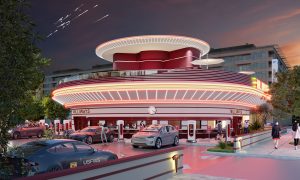
 News1 week ago
News1 week agoTesla’s Hollywood Diner is finally getting close to opening
-
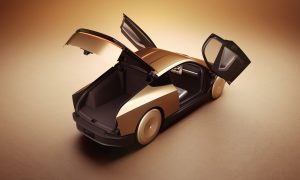
 Elon Musk2 weeks ago
Elon Musk2 weeks agoTesla doubles down on Robotaxi launch date, putting a big bet on its timeline
-
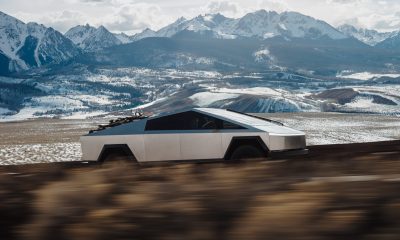
 News4 days ago
News4 days agoTesla is trying to make a statement with its Q2 delivery numbers
-
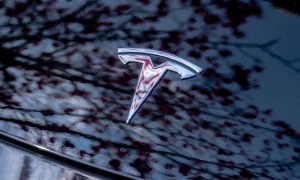
 News2 weeks ago
News2 weeks agoTesla’s top investor questions ahead of the Q1 2025 earnings call
-

 News2 weeks ago
News2 weeks agoUnderrated Tesla safety feature recognized by China Automotive Research Institute
-

 News2 weeks ago
News2 weeks agoTesla reveals its Q1 Supercharger voting winners, opens next round
-
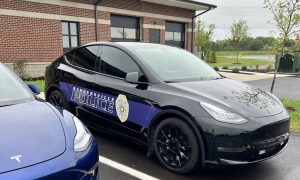
 News2 weeks ago
News2 weeks agoTesla police fleet saves nearly half a million in upkeep and repair costs
-
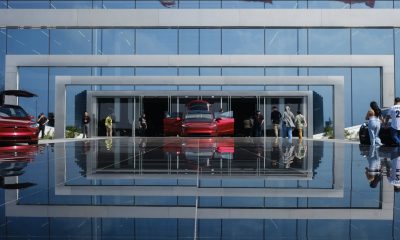
 Investor's Corner7 days ago
Investor's Corner7 days agoLIVE BLOG: Tesla (TSLA) Q1 2025 Company Update and earnings call



